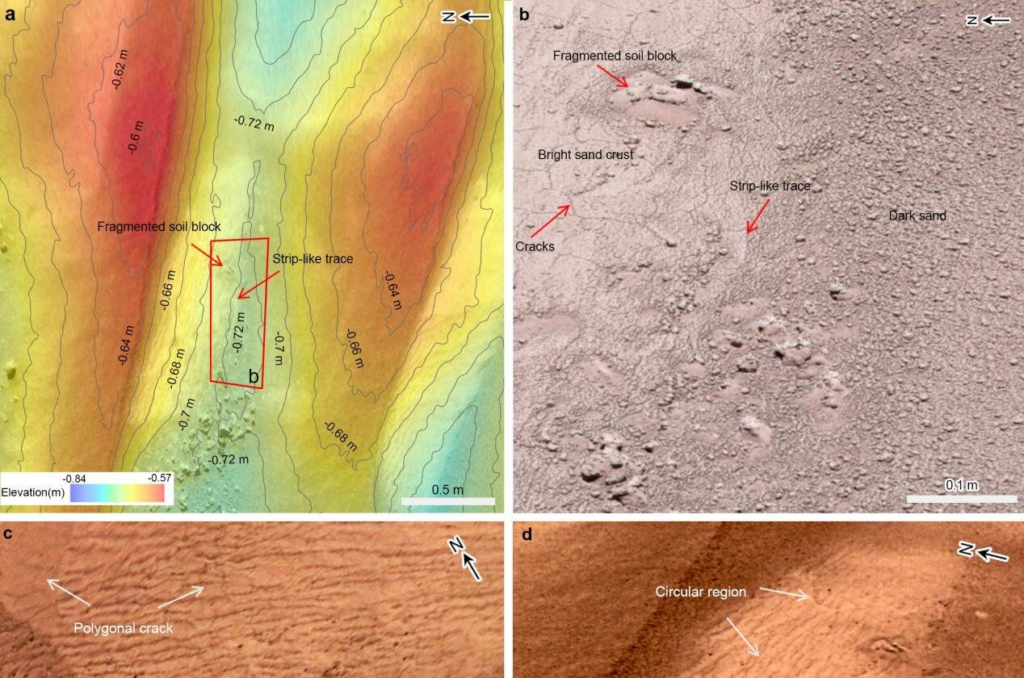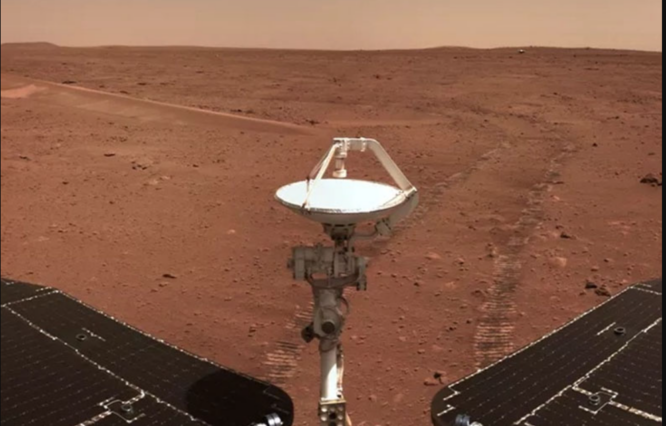According to a study, the Zhurong rover has discovered evidence of water on dune surfaces on modern Mars by providing crucial observational evidence of liquid water at low Martian latitudes.
The discovery, published in the journal Science Advances, provides critical observational evidence of liquid water at low latitudes on Mars, where surface temperatures are warmer and more conducive to life than at higher latitudes.
Prof. Qin Xiaoguang of the Institute of Geology and Geophysics (IGG) of the Chinese Academy of Sciences (CAS) stated, “This is important for understanding the evolutionary history of the Martian climate, looking for a habitable environment, and providing key clues for the future search for life.”

The researchers utilized data collected by the Navigation and Terrain Camera (NaTeCam), the Multispectral Camera (MSCam), and the Mars Surface Composition Detector (MarSCoDe) aboard the Zhurong rover to examine the various surface features and material compositions of dunes at the landing site.
Landing Site
The landing site is situated at the southern border of the Utopia Planitia (UP) Plain, where the northern lowlands unit can be found.
On the dunes’ surfaces, they discovered significant morphological features, such as crusts, fissures, granulation, polygonal ridges, and a strip-like trace.
The analysis of spectral data revealed that the surficial layer of the dune is rich in hydrated sulfates, hydrated silica (particularly opal-CT), trivalent iron oxide minerals (particularly ferrohydrite), and potentially chlorides.

“According to the meteorological data measured by Zhurong and other Mars rovers, we inferred that these dune surface characteristics were related to the involvement of liquid saline water formed by the subsequent melting of frost/snow falling on salt-containing dune surfaces when cooling occurs,” Prof. Qin said.
Salts in dunes specifically cause frost and snow to melt at low temperatures to form saline liquid water. The precipitated hydrated sulfate, opal, iron oxide, and other hydrated minerals bind sand particles to form sand aggregates and even crust as the salty water evaporates.
The crust then fractures further due to contraction. Later frost/snow melting creates polygonal ridges and a stripe-like trace on the surface of the crust.
The estimated age of the dunes (between 0.4 and 1.4 million years) and the relationship between the three phases of water suggest that the transfer of water vapour from the polar ice sheet to the equator during the large obliquity phases of Mars’s late Amazonian period resulted in repeated humid environments at low latitudes.
China’s Tianwen-1 Mars exploration mission’s Zhurong rover successfully touched down on Mars on May 15, 2021.

